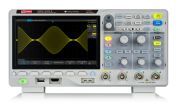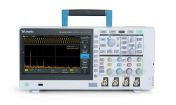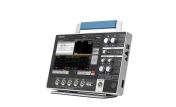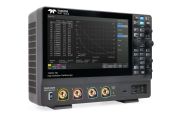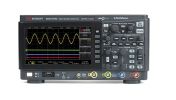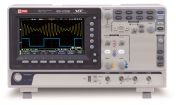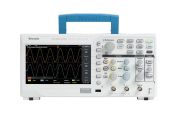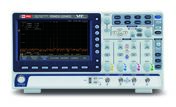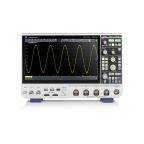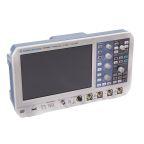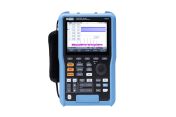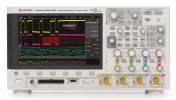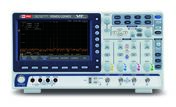200MHz oscilloscope
A 200 MHz oscilloscope is a more advanced electronic test instrument used for measuring, visualising, and analysing electrical signals, with a bandwidth of up to 200 megahertz (MHz). The "200 MHz" specification indicates the maximum frequency the oscilloscope can accurately capture and display.
Key Features:
- Bandwidth - this higher bandwidth allows it to capture more complex and faster-changing signals compared to lower bandwidth models (like 50 MHz or 60 MHz).
- Sampling Rate - is crucial for accurately reconstructing a waveform. For a 200 MHz oscilloscope, the sampling rate is typically in the range of 1 to 2.5 GS/s (giga samples per second), which ensures precise measurement of high-frequency signals.
- High Resolution Display - the oscilloscope displays the waveform of the input signal on a screen, showing how the voltage changes over time. Advanced models may offer high-resolution colour displays and additional analysis features.
Why Would You Use a 200 MHz Oscilloscope?
- Advanced Signal Analysis - ideal for analysing high-frequency analogue and digital signals, such as those found in modern communication systems, high-speed data interfaces, and complex electronic circuits.
- Engineers use 200 MHz oscilloscopes in the design, development, and debugging of high-speed digital circuits, RF circuits, and other applications where signal integrity is critical. It is particularly useful for capturing fast transients, glitches, and signal distortions.
- Versatility for Complex Applications - like telecommunications, aerospace, automotive, and consumer electronics.
What Does It Do?
- Captures and Displays High-Frequency Signals – this makes it suitable for observing signals that change very rapidly.
- Measurement and Analysis - provides detailed measurements of various signal parameters, including rise and fall times, propagation delays, signal amplitude, frequency, phase, and more.
- Advanced triggering options enable the oscilloscope to capture specific events in high-speed signals, such as glitches, pulses, or specific data patterns. This is critical for diagnosing timing issues in digital circuits.
- Advanced Features - many 200 MHz oscilloscopes include features like FFT (Fast Fourier Transform) for frequency domain analysis, serial protocol decoding (e.g., I2C, SPI, CAN), and advanced math functions for in-depth signal analysis.
Popular Searches
Related links
- Oscilloscopes - A Complete Guide
- Oscilloscopes & Accessories
- Fluke 123B ScopeMeter 120B Series 2 Analogue Channels
- Lab Equipment
- Rohde & Schwarz RTH1004 Scope Rider Series 4 Analogue Channels, 8 Digital Channels
- Rohde & Schwarz RTH1004 Scope Rider Series 4 Analogue Channels, 8 Digital Channels
- Rohde & Schwarz RTH1004 Scope Rider Series 4 Analogue Channels, 8 Digital Channels -
- Industrial Robots
